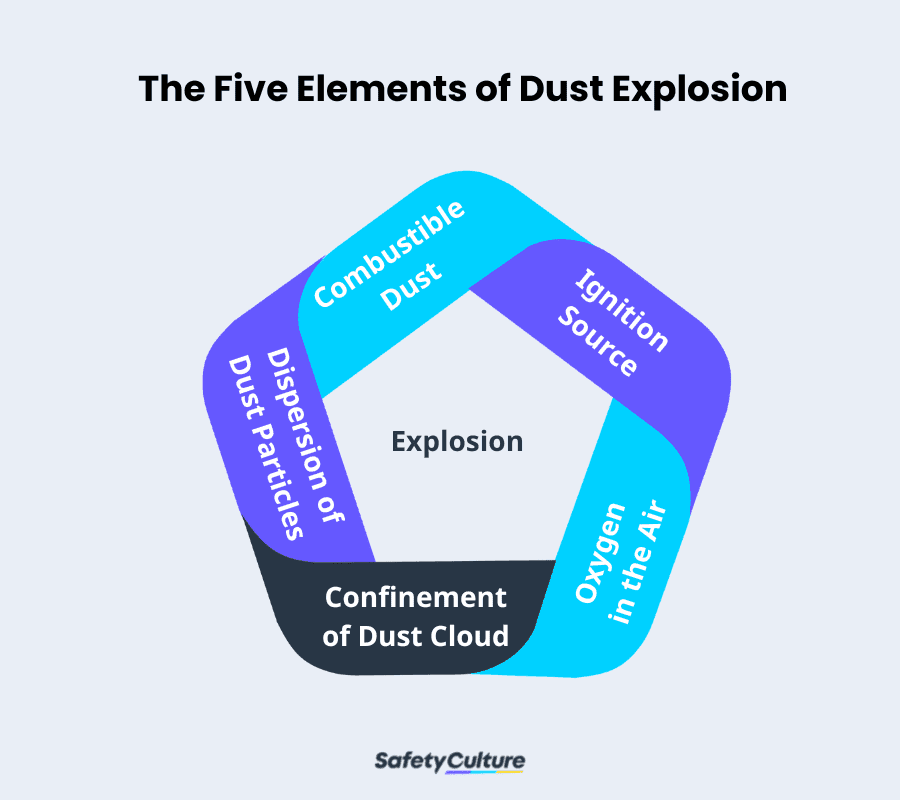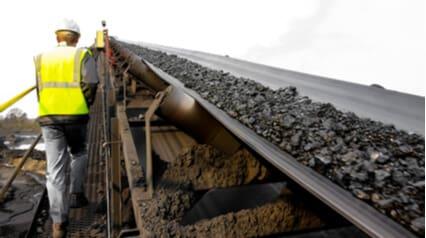What is Combustible Dust?
Combustible dust is any solid material that is divided into fine or distinct particles, which under certain conditions and concentration, can rapidly catch fire or become explosive once exposed to air and other elements. It can be found in a wide variety of materials in various industries and created when items are handled, transported, processed, or stored. Workplaces and facilities that generate dust are all potentially at risk.
Why is it a Hazard?
According to the mid-year report released by Dust Safety Science, a combustible hazard research organization, a total of 51 dust fires occurred in the first half of 2021 which resulted in 5 injuries. During this period, there were also a total of 28 dust explosions around the world which unfortunately resulted in 39 injuries and 8 fatalities.
One of the recent notable incidents of dust explosions in the United States is the sugar dust explosion that happened in Georgia in 2008. 14 people were killed in the incident, while 40 people sustained injuries.
These statistics show that dust explosion is still very much an increasing safety issue in industrial and workplace settings. Businesses should always put safety systems in place to proactively address any issues and prevent these types of incidents that lead to damage to property, injury, and even fatality, from ever happening.
The Five Elements of Dust Explosion
A dust explosion can occur when all these five elements are present:

- Combustible dust – these are solid materials with fine particles that are susceptible to fire or explosion. This element is often referred to as the fuel.
- Ignition source – these are processes or scenarios that can cause fire or explosion such as electrical sparks, static electricity, hot surfaces, friction, etc.
- Oxygen in the air – there should be an oxidizing agent in the air such as oxygen. Oxidizing agents, along with the two previous elements, are enough to create a dust fire.
- Confinement of dust cloud – for a dust explosion to occur, the dust elements should be confined in an enclosed space where pressure builds and expands.
- Dispersion of dust particles – finally, a dust explosion occurs when all the four elements are present and the dust particles are dispersed or distributed in an enclosed area.
How Do You Know if Dust is Combustible?
According to the Occupational Safety and Health Administration (OSHA), a dust is considered combustible if “the material will burn and contains a sufficient concentration of particles 420 microns or smaller to create a fire or deflagration hazard.”
Combustible dust is often characterized as finely ground materials that are smaller in size. They undergo a certain condition which then creates a scenario where a dust explosion is possible. Aside from this however, larger-sized materials like metal and wood can also be susceptible to explosion if they scrape each other, create friction, and form finer particles that can turn into combustible dusts.
Combustible Dust Examples
Workplaces utilize various materials on a daily basis and many of these can potentially be combustible dust. Examples of materials include:
- Agricultural products such as sugar, powdered milk, corn starch, flour, rice, etc. This puts not just the agricultural industry at risk of dust explosion, but the food production industry as well.
- Chemical dust such as coal, sulphur, etc. These types of materials are often present in the pharmaceutical industry.
- Textile products such as silk, wool, synthetic fibers, etc. This puts the fabric manufacturing industry at enormous risk of explosion if not regularly monitored.
- Wood materials can lead to combustible dust, especially those that are stored and used to manufacture new products.
- Metal substances such as aluminum, bronze, magnesium, etc. The businesses that are often at risk with this type of dust hazard are the metal processing and the metal manufacturing industries.
How to Prevent Combustible Dust Explosion?
OSHA released a Hazard Communication Guidance for Combustible Dusts that gives an overview of the topic and that businesses and employers can use as a guide in implementing their control measures for dust explosion. Additionally, Kirkwood Community College, in partnership with OSHA, released a Safety and Injury Prevention Awareness Training Program that focuses on how to best prevent these unwanted incidents.
The following are some preventive measures from OSHA and a few other tips on how to proactively maintain a safe working environment for employees and in facilities with regard to combustible dust:
Identify hazardous dusts present in your workplace
Start by recognizing all the possible combustible materials in your facility. Some may not initially be apparent so it’s best to conduct regular checks to identify them. This way, you’ll get an idea on how to best handle each recognized hazardous dust.
Create your own Combustible Dust Audit Template
Build from scratch or choose from our collection of free, ready-to-download, and customizable templates.
Browse Combustible Dust Audit TemplateUse proper dust collection systems
Proper housekeeping is crucial in reducing the chance of any untoward incidents in workplaces. With dust hazards, it’s ideal to use a vacuum cleaner in collecting the dust as this effectively and safely discards them. Just ensure that the vacuum utilized is safe and appropriate for industrial use.
Implement good control measures
Businesses must also adopt a comprehensive and all-encompassing approach in their system to prevent dust hazards, fires, and explosions. This gives the employees a detailed guide on what measures to implement and how to implement them. It also helps ensure that all people and stakeholders involved are on the same page.
Conduct regular employee training
In relation to the previous item, businesses should conduct regular training and educational courses for employees with regard to hazardous dust. These training can include recognizing potential hazardous dust and operating safety equipment, or properly handling and managing dust fires or explosions.
Assess confined space risks
As the confinement of dust clouds is one of the elements of dust explosions, proactively conduct assessments on confined spaces or areas in your facility. This would help in recognizing any potential issues and in addressing them accordingly.
Perform regular inspections
For these efforts to be effective, it doesn’t just stop in implementing various company-wide measures, it’s also critical to conduct regular inspections and check-ins to ensure that they are consistently practiced. This further helps identify areas for improvement and address recognized issues efficiently.
Applying all these measures and ensuring that they are being practiced may be a bit overwhelming but businesses can always utilize tools that can help them achieve this.
Improve your EHS Management
Cultivate a safe working environment and streamline compliance with our EHS solutions.
Explore nowProtect Your Workplace with SafetyCulture (formerly iAuditor)
Protecting your workplace and employees against the potential hazardous effects of combustible dust can help prevent tragic industrial incidents. Invest in employee training, top-quality equipment, and even in new technologies.
SafetyCulture is a powerful digital platform that businesses can use in implementing safety measures and in monitoring employee compliance with regard to rules surrounding combustible materials. This tool helps apply standardized approaches efficiently and keep all relevant stakeholders on the same page. SafetyCulture also enables you do the following:
- Conduct regular inspections using digital combustible dust audit templates. You can also create and customize your own.
- Score your inspections and use the Analytics dashboard to progressively monitor compliance and catch areas with the most issues or non-compliance.
- Create corrective actions, or turn them into issues, and immediately assign them to personnel for time-sensitive responses.
- Attach media/images directly during inspections to promote urgency and high-level visibility.
- Alert your team to critical matters and effectively communicate using Heads Up.
- Perform other inspections or audits relevant to your workplace.
- Our Public Library has thousands of free templates that you can use.
- Generate inspection reports and share them with your team and other relevant stakeholders.




